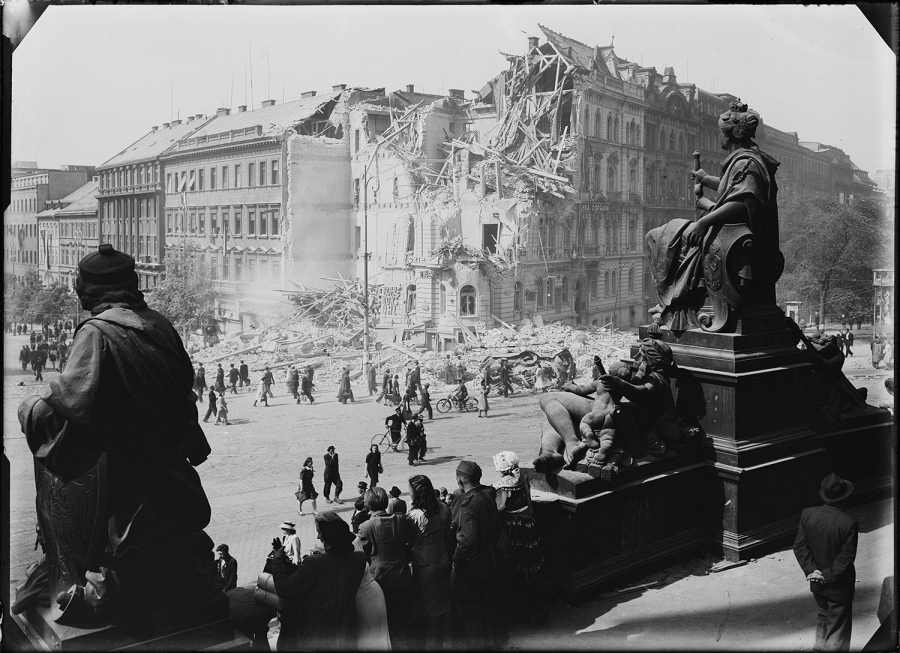In the evening on 5 May 1945, the commander of arms SS Carl Friedrich von Pückler-Burghaus issued an order to use the German air force against the Prague insurgents. It started the following day and one of the main targets was the radio building on Vinohradská Street, the area of Wenceslas Square, and the historical centre of the city on the right river bank. Explosive and incendiary bombs were supposed to be used. The day after, on 7 May, most of the attacks came from the pilots of the IIIrd unit of Schlachtgeschwader 77. One of the Luftwaffe pilots, Lieutenant Willi Stampfl, said that when the radio building could not be found (the building was hit during other air raids, nevertheless) they decided to drop the bombs on “some corner house on Wenceslas Square”. It was probably the house on the corner of the square and Washington's Street (known as Weber Street at the time), severely damaged by a bomb dropped in the early evening. This bombing caused damage to other buildings on Wenceslas Square as well, for example the department store Prokop a Čáp (no. 804/II). Bad weather made other air raids by the Luftwaffe more difficult during the rest of the May Uprising.
The building destroyed by bombing had stood there since the 1880s. The street plan in the area was outlined after the clearance of the Baroque fortifications of New Town. The house had four storeys with a fifth one set back. Its distinctive tower competed with the National Museum building. A building with a department store designed by Max Gronwaldt and Jiří Chvatlina was built on the site after the war, between 1954–1957, originally called Pramen, later known as the House of Food (Dům potravin). After the Velvet Revolution, a branch of the Bílá Labuť department store was located there. Currently, the building is used as a hotel.
Like most of the photographers of the time (e.g. Antonín Alexander from the Monument Board), Josef Sudek took a picture of the building with a monumental view from the ramp of the National Museum, with a sculpture of Bohemia and allegorical figures of the rivers Labe and Vltava lying at its foot; the figures are works by the sculptor Antonín Wagner (1885–1890).
